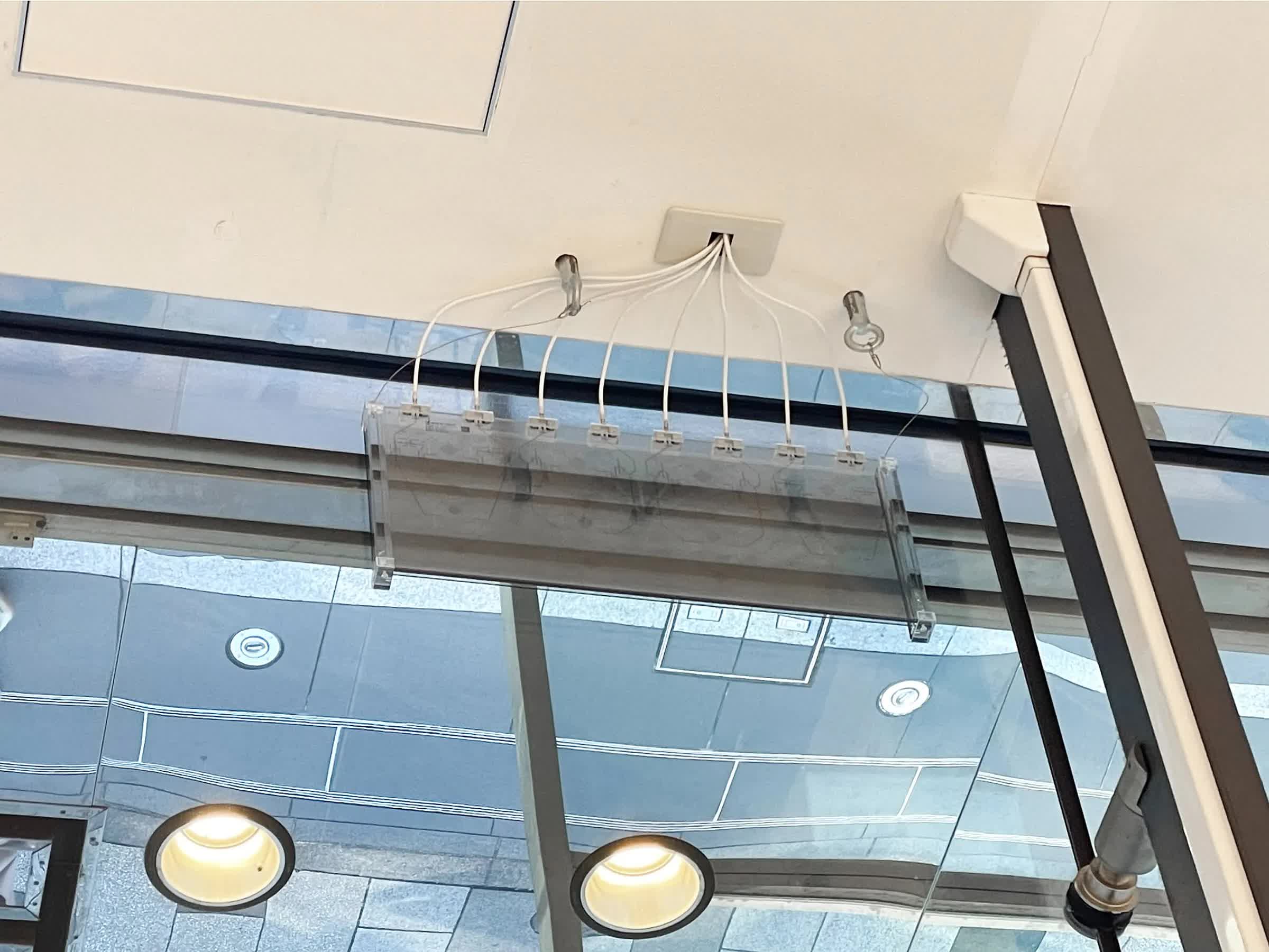
In brief: It’s been over five years since 5G started its worldwide rollout, bringing low-latency super-speed internet to hundreds of millions. But building out those 5G networks has been a challenge. The higher frequency signals don’t travel as far, so more base stations are required compared to 4G. With prime real estate in limited supply, Japanese telecoms had to get creative.
That’s where futuristic glass antennas come in, courtesy of a partnership between glassmaker AGC, mobile carrier NTT Docomo, and infrastructure firm JTower. Dubbed WAVEANTENNA, it turns ordinary windows into inconspicuous 5G base stations by sandwiching a special transparent conductive material – similar to what’s found in laminated windshields – between two panes of glass.
In an image shared by JTower, the material appears to blend right into the glass, with only the cabling giving away the antenna – though even those wires stay low-key, disappearing straight into the roof.
Shota Ochiai, a marketing executive from AGC, describes the implementation as “the world’s first antenna that turns a window into a base station that can be attached to a building window inside and turn the outdoors into a service area without spoiling the cityscape or the exterior appearance of the building.”

This method solves another problem. Akinobu Ueda from NTT Docomo stated that it was previously difficult to receive permission from building owners to install small cell base stations on the mid to lower floors of a building.
Another slick aspect about these window antennas is that the glass thickness can be precisely engineered to reduce the attenuation and reflection from the radio signals being absorbed or reflected by the window-sized setup.
“I don’t think the idea for using transparent conductive materials as an antenna existed before,” added AGC’s Kentaro Oka.
As for connectivity, AGC stated that the antenna is optimized to work with frequencies in the 5G Sub6 band, between 3.7 and 4.5 GHz. While this is far from the optimal mmWave frequencies of 30-300 GHz primarily used in 5G, it’s still a notable upgrade over 4G. It also serves a slightly different purpose: the lower frequencies allow for better range when penetrating buildings.
The glass antennas aren’t just for cityscapes either. AGC has tailored versions for vehicles, helping reduce dropped connections on the go. The technology has already made it stateside, with one of the customers being the remote-controlled Halo car-sharing platform in Las Vegas.
It’s worth mentioning that the technology was originally launched in 2020. A new version was released last year, allowing multiple carriers to share the same window infrastructure. One of these upgraded antennas went live for the first time last month on a window in Tokyo’s bustling Shinjuku district.
 Print
Print


